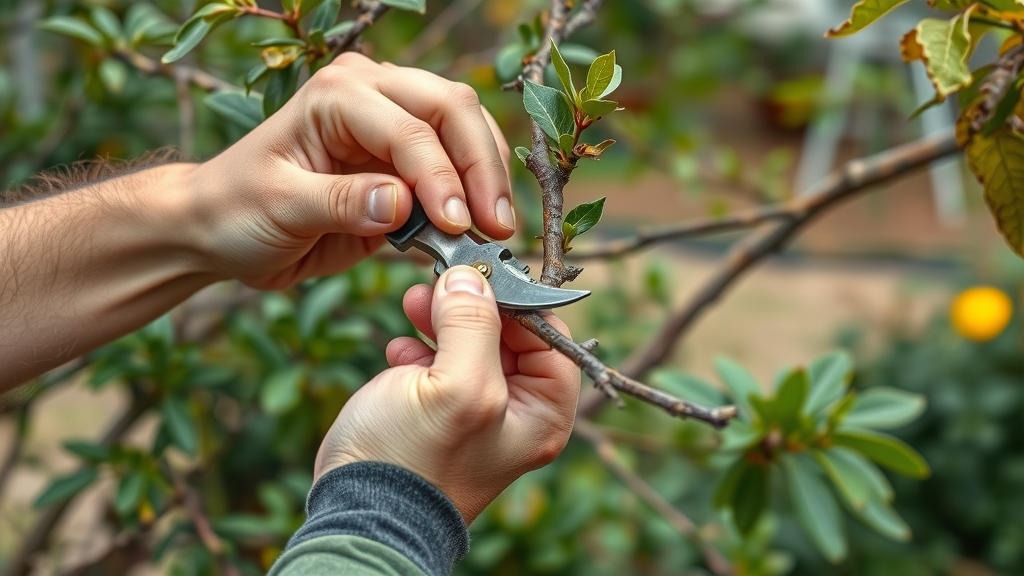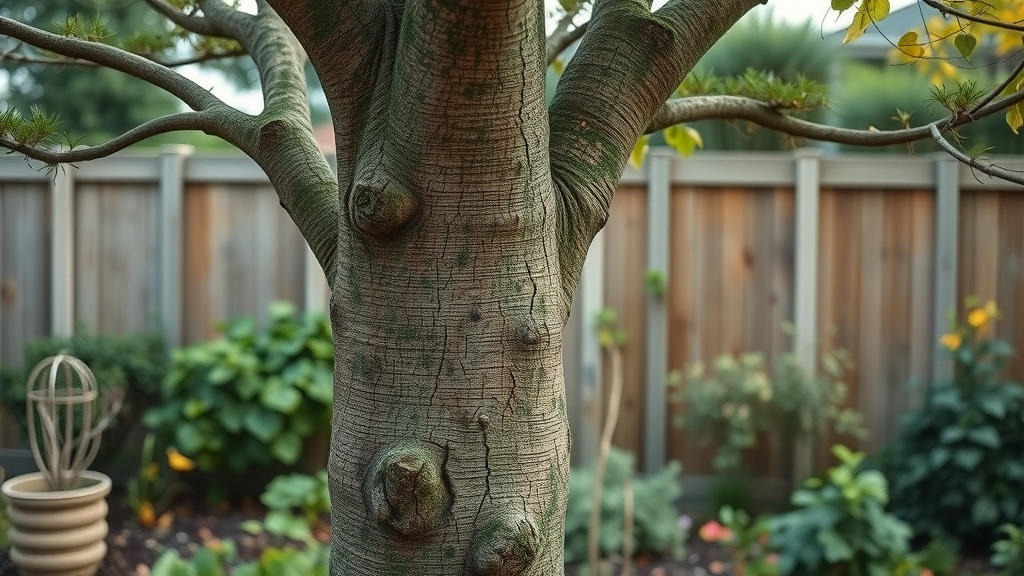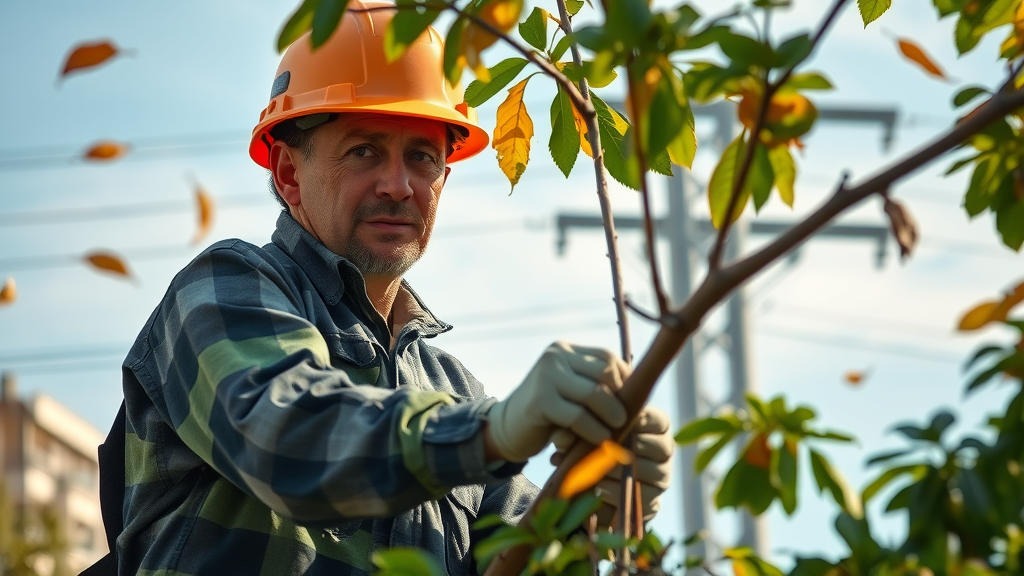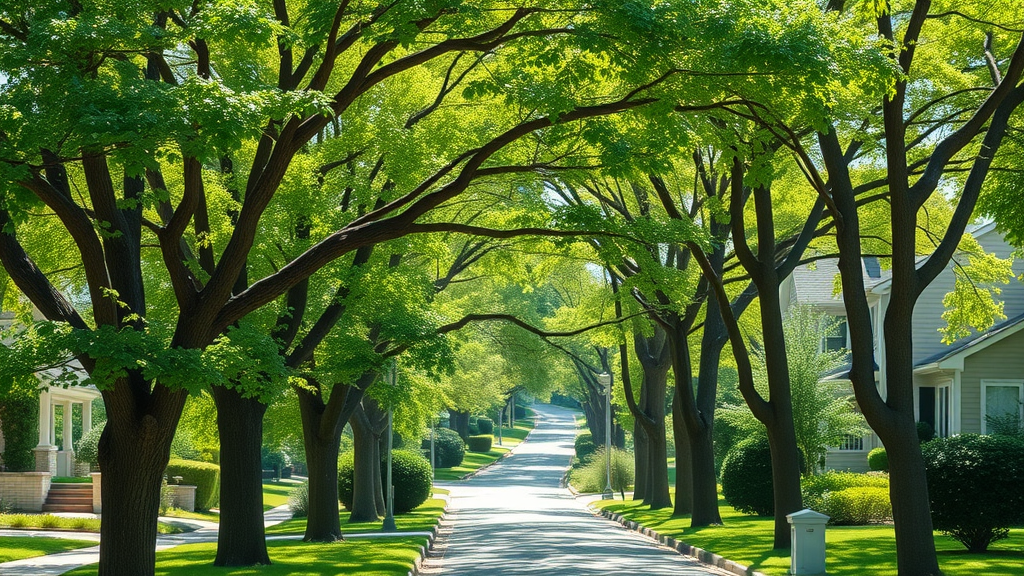Contributed by Christopher Palank
ISA Certified Arborist
Sunburst Tree Experts
516-523-4675
Tree pruning is not only an essential task for homeowners but also a crucial service for maintaining the overall health and aesthetics of trees on your property. In fact, studies show that properly pruned trees can have a lifespan up to 30% longer than those that are neglected. This article delves into tree pruning best practices, offering you a comprehensive guide to elevate your tree care game.
Overview of Tree Pruning Best Practices
What is Tree Pruning?
Tree pruning is the process of selectively removing specific parts of a tree, such as branches, buds, or roots, to improve its health, shape, and overall aesthetics. This horticultural practice is performed for various reasons, including promoting healthy growth, reducing the risk of damage from storms, and enhancing the tree’s aesthetic value. The act of pruning must be executed with precision and care, ensuring that the tree remains healthy post-intervention.
Importance of Proper Pruning Techniques
Utilizing proper pruning techniques not only affects the immediate appearance of a tree but also its long-term vitality. When performed correctly, pruning enables trees to strengthen their structure, eliminate dead or diseased parts, and encourage new growth. According to Chris Palank, of Sunburst Tree Experts, “The health of the tree should supersede the overall aesthetics,” emphasizing that the focus must be on improving the tree’s condition over achieving a visually pleasing shape.
Common Misconceptions About Tree Pruning
Aesthetic vs. Health Considerations
Many homeowners believe that aggressive tree pruning creates aesthetically pleasing trees, but this mindset can lead to significant issues. Over-pruning can weaken the tree, making it more susceptible to pests and diseases. Additionally, it’s essential to recognize when a tree’s health should take precedence over appearance.
Frequency of Pruning
Another common misconception is the frequent need for pruning. While some trees benefit from regular pruning, others may only require it once every few years. The best approach is to consult with a professional, like an arborist, who can assess the individual needs of your trees.
Best Practices for Tree Pruning
The Three Cut Pruning Method
One of the most effective ways to prune is using the Three Cut Pruning Method . This technique minimizes the risk of damaging the tree and encourages healing. The method involves making a preliminary cut on the underside of a branch, which prevents tearing; a second cut from the top to remove the branch; and a final cut to remove the remaining stump. This ensures a clean cut and promotes rapid healing.

Identifying Dead or Hazardous Branches
Recognizing dead or hazardous branches is critical for safe pruning. Dead limbs pose risks during storms or high winds, while diseased branches can spread pathogens to healthy parts of the tree. Regular inspections can help with the early identification of these issues.
Understanding Pruning Cuts
Pruning cuts can be classified into three types: heading cuts, thinning cuts, and reduction cuts. Each has its specific purpose, whether promoting growth, clearing out dead wood, or reshaping the tree. Understanding the right cut to utilize at the right time can significantly influence your tree’s health.
Signs Your Trees Need Attention
Recognizing Distress Signals in Trees
It’s crucial for homeowners to monitor their trees for signs of distress. Indicators like drooping leaves, discolored foliage, or extensive dieback can signal that a tree may need pruning or professional attention. Awareness of these signs enables quicker intervention, improving the tree’s prospects for recovery.
Common Pests Affecting Trees
Certain pests can be life-threatening to trees. For example, the Southern Pine Beetle thrives in areas with warm climates and can inflict severe damage. Regular consultations with an expert can help mitigate pest-related issues effectively.
Expert Insights on Tree Care
Education and Awareness for Homeowners
Chris emphasizes the importance of educating homeowners on tree care. Knowledge is power; understanding the basics of pruning can empower you to recognize problems sooner and avoid common mistakes.
Pruning Techniques for Different Tree Types
Pruning Young Trees
Pruning is particularly beneficial for young trees. Establishing a strong structure early on can guide their growth, ensuring they develop properly. Key practices include selectively removing branches to create a strong central leader and preventing overcrowding.

Pruning Mature Trees
Mature trees require different care than younger ones. The focus here should be on maintaining the health of existing branches and preventing any hazards. This often means removing dead or dying wood while carefully considering how much to prune to reduce stress.
Common Mistakes in Tree Pruning
Over-Pruning and Its Consequences
Over-pruning is one of the most prevalent mistakes among inexperienced tree owners. Cutting away too much foliage can severely stunt growth and lead to long-term health issues. Understanding the balance between necessary cuts and excessive trimming is essential.

Improper Cuts and Their Impact
Improper cuts can lead to significant injuries to trees, encouraging pests and diseases to invade. Educating yourself on proper cutting techniques is essential to ensuring that your pruning promotes healthy regrowth and tree structure.
Actionable Tips for Homeowners
Creating a Pruning Schedule
Plan your pruning activities based on the season, tree type, and growth rate. Developing a scheduled routine can help ensure that your trees receive timely care without frequent overhauls.
When to Call a Professional Arborist
Understanding when to bring in a professional is crucial. If your trees show signs of distress or if you’re unsure about your pruning technique, calling an arborist is the wise choice to ensure the health of your trees.
People Also Ask
What are the 3 C’s of pruning?
The 3 C’s of pruning are Clarity, Cleanliness, and Cut . These principles guide homeowners in making effective pruning decisions.

What are the 5 rules of pruning trees?
The 5 rules of pruning include:
1. Know what to cut —research tree species and growth habits.
2. Make the right cuts —understand types of cuts and their purposes.
3. Time it right —choose the right season for pruning.
4. Avoid over-pruning —prioritize health over aesthetics.
5. Practice safety —use proper equipment and techniques.
What is the best tree pruning method?
The best tree pruning method depends on the tree species, the specific reasons for pruning, and the overall goal (health vs aesthetics). However, the Three Cut Method is widely regarded as an effective technique for various situations.
What are the 5 D’s of pruning?
The 5 D’s of pruning are Dead, Diseased, Damaged, Dying, and Dangling . Identifying these conditions helps guide pruning decisions for improved tree health.
Conclusion
Tree pruning best practices involve understanding both the art and science of caring for trees. By engaging in proper techniques and regular maintenance, homeowners can ensure the long-term health of their trees while enhancing the beauty of their properties.
To maintain the health of your trees, consider consulting an expert for a thorough assessment and professional pruning services. “Paying attention to the trees on your property is imperative for their long-term health,” advises Chris Palank from Sunburst Tree Experts. Don’t wait until it’s too late—act now to preserve the beauty and vitality of your landscape! Contact Chris Palank from Sunburst Tree Experts on Long Island, New York today at 516-523-4675.
 Add Row
Add Row  Add
Add 




 Add Row
Add Row  Add
Add 

Write A Comment